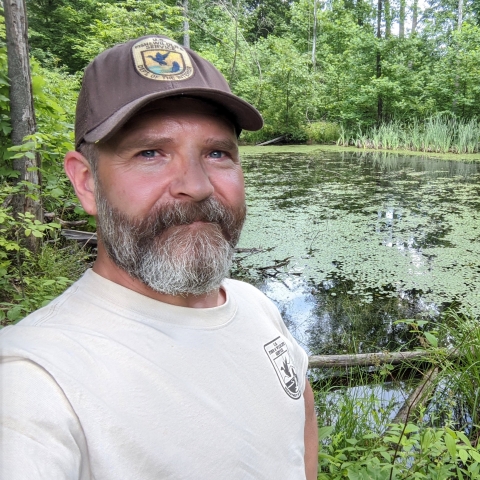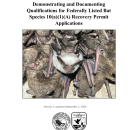
620 S. Walker Street
Bloomington, IN 47403
United States
About Andrew King
I'm a biologist in the U.S. Fish and Wildlife Service's Indiana Field Office serving as the Deputy Field Supervisor. Earlier in my career, I worked as an environmental consultant and managed field surveys for rare species and prepared natural resource management plans for the DoD (Army, Navy, Air Force), OSM, U.S. Forest Service, State agencies and DOTs, and private sector clients (e.g., natural gas transmission, coal mining, and electric utilities) across the eastern U.S. With the USFWS, I primarily work with others to conserve wildlife habitat and administer the Endangered Species Act (ESA). I'm experienced in leading Section 7 Section 7
Section 7 Consultation
The Endangered Species Act (ESA) directs all Federal agencies to work to conserve endangered and threatened species and to use their authorities to further the purposes of the Act. Section 7 of the Act, called "Interagency Cooperation," is the mechanism by which Federal agencies ensure the actions they take, including those they fund or authorize, do not jeopardize the existence of any listed species.
Learn more about Section 7 ESA consultations, Habitat Conservation Plans, NEPA analyses, and endangered species recovery planning and implementation. I've authored/coauthored key publications on the federally endangered Indiana bat (IBat,; Myotis sodalis) including its recovery plan, 5-year reviews, and annual updates to range-wide survey guidelines. I coordinate the biennial IBat winter population surveys across 20 states, oversee the Service's IBat Hibernacula Database and Bat Literature Database and serve as an instructor for an acoustic bat survey course at the Service's National Conservation Training Center. I'm an active member of the White-Nose Syndrome (WNS) National Response Team and lead a subgroup tasked with developing bat-friendly forest management BMPs. In addition, I have professional experience conducting habitat assessments, Bird Aircraft Strike Hazard (BASH) assessments, and wildlife surveys (small mammals, birds, raptors, herps, and insects), and have led habitat restoration and mitigation efforts.




